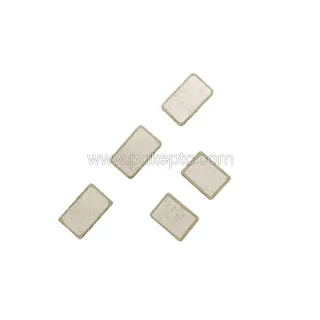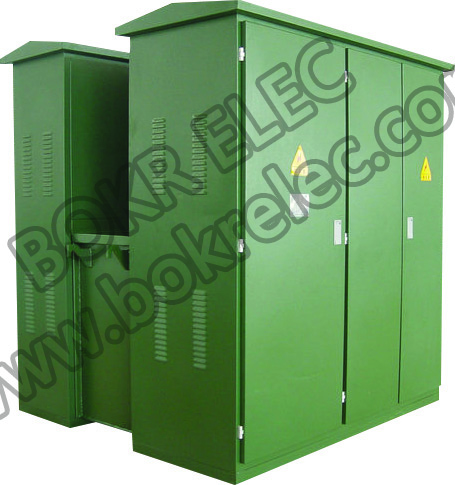Seismic Sensor vs Vibration Sensor: Understanding the Differences
Seismic sensors and vibration sensors are both used to detect mechanical disturbances, but they serve distinct purposes and operate based on different principles. Understanding the differences between these two types of sensors is essential for selecting the appropriate technology for specific applications.
Seismic Sensors: Seismic sensors, also known as seismometers or seismographs, are devices designed to detect and measure ground motion caused by seismic waves, such as those generated by earthquakes or explosions. These sensors typically consist of a mass suspended on springs, with an attached transducer that converts mechanical motion into an electrical signal. Seismic sensors are highly sensitive and capable of detecting minute vibrations in the Earth's crust.
Key Features of Seismic Sensors:
High Sensitivity: Seismic sensors are designed to detect low-frequency seismic waves, making them highly sensitive to ground motion.
Wide Frequency Range: Seismic sensors can detect a broad spectrum of frequencies, ranging from infrasonic to ultrasonic vibrations.
Directional Sensitivity: Some seismic sensors are capable of discerning the direction of ground motion, allowing for accurate localization of seismic events.
Earthquake Early Warning: Seismic sensors are essential components of earthquake early warning systems, providing timely alerts to mitigate the impact of seismic hazards.
Applications of Seismic Sensors:
Earthquake Monitoring: Seismic sensors are deployed in seismic monitoring networks worldwide to detect and record seismic activity, helping seismologists study earthquake patterns and assess seismic hazards.
Structural Health Monitoring: Seismic sensors are used to monitor the structural integrity of buildings, bridges, dams, and other infrastructure, detecting vibrations caused by structural defects or dynamic loads.
Oil and Gas Exploration: Seismic sensors are employed in seismic surveying techniques to map subsurface geology and identify potential oil and gas reservoirs.
Vibration Sensors: Vibration sensors, also known as accelerometers or vibrometers, are devices used to measure mechanical vibrations or oscillations in machinery, equipment, or structures. These sensors detect changes in acceleration, velocity, or displacement and convert them into electrical signals for analysis. Vibration sensors are commonly used for condition monitoring, predictive maintenance, and machine health assessment.
Further reading:Applications of High Precision Film Fined Resistors
Advantages of LiFePO4 Batteries Over Other Lithium-Ion Batteries
The Ultimate Guide to Portable Power Stations: Everything You Need to Know
What is SF6 Gas, and Why is it Used in Loadbreak Switchgear?
What Sets Metal Glaze Resistors Apart from Other Types?
Wire and Cable Professional Knowledge
Sourcing Reliable Electronic Components: A Buyer's Guide
Key Features of Vibration Sensors:
Frequency Range: Vibration sensors are designed to measure a specific range of frequencies associated with machinery operation or structural dynamics.
Mounting Options: Vibration sensors can be mounted directly on machinery or structures using various mounting methods, including adhesive mounting, magnetic mounting, or screw mounting.
Integration with Monitoring Systems: Vibration sensors can be integrated with monitoring systems and software platforms to track vibration levels, identify abnormal patterns, and diagnose machine faults.
Applications of Vibration Sensors:
Machinery Condition Monitoring: Vibration sensors are used to monitor the condition of rotating machinery, such as motors, pumps, compressors, and turbines, detecting mechanical faults such as imbalance, misalignment, and bearing wear.
Structural Health Monitoring: Vibration sensors are deployed in buildings, bridges, wind turbines, and other structures to monitor vibrations caused by environmental factors, traffic loads, or dynamic forces, assessing structural integrity and safety.
Aerospace and Automotive: Vibration sensors are used in aerospace and automotive applications to measure vehicle dynamics, assess ride comfort, and detect engine or component vibrations.
Seismic sensors and vibration sensors serve distinct purposes and are designed to detect different types of mechanical disturbances. While seismic sensors are optimized for detecting seismic waves associated with earthquakes and other geological events, vibration sensors are tailored for measuring vibrations in machinery, equipment, and structures. Understanding the differences between these sensors is crucial for selecting the appropriate technology for specific applications in earthquake monitoring, structural health monitoring, machinery condition monitoring, and beyond.
What are the different types of emergency power supplies?
Which types of electric under blankets are suitable for different bed sizes and mattress types?
Liquid Tight Flexible Metal Conduit: Versatile, Durable, and Secure
The Role of Circuit Breakers in Electrical Safety
Small Size, Big Impact: How Micro Camera Modules Are Changing Industries
Choosing and Installing PE Cable Threading Pipe
How Does the Electric Blanket Controller Work?
Previous: None
Next: None
Related Articles
If you are interested in sending in a Guest Blogger Submission,welcome to write for us!











Comments
0